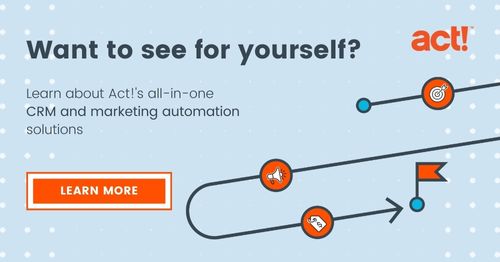
Small businesses play a crucial role in economic growth and technological advancement. The US is home to more than 33 million small businesses. These organizations make up nearly 99.9 percent of all U.S. businesses and employ 46.4 percent of the country’s workforce.
Nevertheless, running a small business involves overcoming a series of obstacles. And one of the biggest challenges small and medium-sized businesses (SMBs) face is competing against big names in their industry.
Larger businesses devote millions of dollars to research and product development. They invest in expensive marketing campaigns to turn their brands into household names. And they have huge teams overseeing different operations. Most SMBs can’t afford those luxuries.
It isn’t surprising, then, that one in five small businesses in the U.S. shuts down within the first year of operation. Worse still, barely 30 percent of small businesses make it past the 10-year mark.
But that doesn’t mean small businesses can’t attract and retain customers in a competitive market. SMBs have several advantages over industry giants that can help them survive and thrive in the long run and can execute the following strategies to compete.

Deliver an unparalleled customer experience
High-quality customer experience is the key to success for any business, regardless of industry or size. While established brands spend thousands or millions on customer acquisition, they’re often notorious for slow or unhelpful customer support. And with a vast customer base, it isn’t feasible for them to build and maintain individual customer relationships.
SMBs can use their more limited customer bases to their advantage by delivering high-quality, frictionless customer journeys. From setting a chatbot and FAQs page on your website to offering prompt, multi-channel support, there are various ways to empower customers throughout the sales funnel.
Additionally, you can use a customer relationship management (CRM) platform to monitor and personalize customer interactions. A CRM solution can provide you with a comprehensive overview of every customer, including their purchase habits, online behavior, and complaint history, among other things.
A cloud-based CRM system makes that information available to customer support teams anytime, anywhere, and on any device. It helps them address customer complaints and queries better.
A CRM platform comes in handy for marketing and sales teams, too. Marketing teams can use it to monitor how individual customers interact with different content assets and delight them with more personalized messaging.
Similarly, sales teams can use data from CRM software to optimize the sales pipeline, boosting conversions and efficiency. Modern CRM platforms also offer marketing automation integration, meaning you can set up automated lead-nurturing campaigns through email, SMS, and other channels.
All these efforts result in a flawless purchase experience tailored to each customer’s needs. That, in turn, helps boost customer loyalty and retention.
Leverage data to the fullest

Small businesses typically use a variety of tools, such as CRM, project management, and accounting software, to run daily operations. These tools generate a ton of data that can help you streamline processes and maximize efficiency.
For instance, data from project management tools can help you identify potential bottlenecks and sources of delay. Implementing suitable measures to eliminate bottlenecks can speed up execution and time to market.
Similarly, CRM data can give you insights into customer behavior and preferences, which can help you spot emerging trends in consumer habits and spending. You can modify your marketing strategies accordingly to harness these trends.
Larger businesses have to go through an established hierarchical structure to get new marketing campaigns approved. As an SMB, you can use your flexibility to your advantage by pivoting strategies as soon as CRM data indicates a shift in consumer behavior.
Of course, you’ll need to invest in a few data processing and analytics tools. But the benefits of these tools far outweigh their costs
Establish a solid online presence
Building a powerful online presence is non-negotiable for small businesses in 2023. While industry giants spend millions on paid advertising, you can use organic digital marketing techniques to attract your target demographic without burning a hole in your pocket.
There are several organic ways to connect with potential customers, from publishing high-quality blog posts to sharing behind-the-scenes videos on Instagram. Instead of promoting products and services outright, focus on highlighting your brand’s story and vision.
Leverage more immersive content formats, such as videos and podcasts, to improve audience engagement. Host live Q&A sessions, polls, and ask-me-anything (AMA) sessions to interact with your audience and make them feel more valued.
Lastly, invest in a rock-solid search engine optimization (SEO) strategy to improve your brand’s visibility in search engine results.
Leverage your employees to help build your brand
Employees are the most valuable asset for every small business. Unlike larger companies, startups and SMBs usually have a small team of driven and skilled professionals who believe in the company’s vision.
Nurturing and retaining these employees can turn them into loyal advocates of your brand. It will also motivate them to think outside the box and devise innovative solutions to every challenge your company encounters.
That emphasizes the importance of building your employer brand through positive hiring and onboarding practices. Maximize employee engagement and satisfaction by giving them the freedom to work on their own terms. Even better, provide them with adequate learning and professional development opportunities to help them advance in their careers.
Recognize employee achievements and milestones on social media platforms, particularly LinkedIn. And be sure to collect regular feedback from employees and act on it to improve the work environment.
A strong employer brand is a mark of good company culture and highlights how your business values its people. It’s the kind of positioning industry giants struggle to achieve.
Protect your reputation
Despite your best efforts, some customers won’t be satisfied with the quality of your products or customer service. They might use social media channels or online forums to rant about your brand.
And here’s the thing—even a single negative review can destroy your online reputation and drive new customers away. That makes it crucial to respond to every customer review, good or bad.
If it’s a positive review, thank the customer for purchasing from you and share relevant resources they can check to harness your product’s potential. In the case of a negative review, acknowledge your team made a mistake and assure the customer you’ve noted their feedback.
Use their feedback to improve product features and eliminate friction in the customer journey. This can ensure that a disgruntled customer eventually becomes a happy one.
Similarly, reply to direct messages and comments on your social media posts. Besides strengthening your brand’s reputation, these efforts also help you earn customer trust and loyalty.

Get involved in the local community
Big businesses with a global presence usually don’t have any natural connection to the local communities they serve. You can stand out from such competitors by actively participating in local events, such as donation drives and fundraisers.
Other ways to connect with the local community include:
- Sponsoring a marathon
- Hosting a conference or summit
- Partnering with other local SMBs
You can also volunteer at nonprofit organizations on the weekends and ask your employees to do the same.
Don’t let industry giants overshadow your small business
Small businesses face several challenges, including limited funds and resources. But their agility and flexibility can help them stand out from established market players and build a strong rapport with their target audiences.
Growing your online presence and employer brand can show that your business is a class apart from competitors. Additionally, investing in a CRM system and data analytics tools improves the customer experience, driving more sales and revenue.
Act! offers a robust, feature-packed CRM with built-in marketing automation capabilities. With Act!, you can stay on top of customer journeys and purchase patterns and use those insights to inform marketing and sales strategies.







